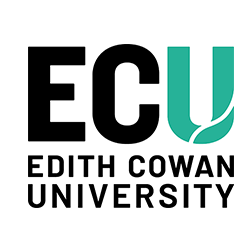Abstract
Background and Purpose: Optimizing speech and language therapy (SLT) regimens for maximal aphasia recovery is a clinical research priority. We examined associations between SLT intensity (hours/week), dosage (total hours), frequency (days/week), duration (weeks), delivery (face to face, computer supported, individual tailoring, and home practice), content, and language outcomes for people with aphasia.
Methods: Databases including MEDLINE and Embase were searched (inception to September 2015). Published, unpublished, and emerging trials including SLT and ≥ 10 individual participant data on aphasia, language outcomes, and time post-onset were selected. Patient-level data on stroke, language, SLT, and trial risk of bias were independently extracted. Outcome measurement scores were standardized. A statistical inferencing, one-stage, random effects, network meta-analysis approach filtered individual participant data into an optimal model examining SLT regimen for overall language, auditory comprehension, naming, and functional communication pre-post intervention gains, adjusting for a priori–defined covariates (age, sex, time poststroke, and baseline aphasia severity), reporting estimates of mean change scores (95% CI).
Results: Data from 959 individual participant data (25 trials) were included. Greatest gains in overall language and comprehension were associated with > 20 to 50 hours SLT dosage (18.37 [10.58–26.16] Western Aphasia Battery–Aphasia Quotient; 5.23 [1.51–8.95] Aachen Aphasia Test–Token Test). Greatest clinical overall language, functional communication, and comprehension gains were associated with 2 to 4 and 9+ SLT hours/week. Greatest clinical gains were associated with frequent SLT for overall language, functional communication (3–5+ days/week), and comprehension (4–5 days/week). Evidence of comprehension gains was absent for SLT ≤ 20 hours, < 3 hours/week, and ≤ 3 days/week. Mixed receptive-expressive therapy, functionally tailored, with prescribed home practice was associated with the greatest overall gains. Relative variance was < 30%. Risk of trial bias was low to moderate; low for meta-biases.
Conclusions: Greatest language recovery was associated with frequent, functionally tailored, receptive-expressive SLT, with prescribed home practice at a greater intensity and duration than reports of usual clinical services internationally. These exploratory findings suggest critical therapeutic ranges, informing hypothesis-testing trials and tailoring of clinical services.
Document Type
Journal Article
Date of Publication
2022
Publication Title
Stroke
Publisher
American Heart Association
School
School of Medical and Health Sciences
RAS ID
56674
Funders
National Institute for Health Research Health Services and Delivery Research (14/04/22) / The Tavistock Trust for Aphasia, United Kingdom / National Health Service, UK or the Department of Health, UK
Creative Commons License

This work is licensed under a Creative Commons Attribution-Noncommercial-No Derivative Works 4.0 License.
Additional Information
Erin Godecke of Edith Cowan University is a member of the RELEASE Collaboration


Comments
REhabilitation and recovery of peopLE with Aphasia after StrokE (RELEASE) Collaborators. (2022). Dosage, intensity, and frequency of language therapy for aphasia: A systematic review–based, individual participant data network meta-analysis. Stroke, 53(3), 956-967. https://doi.org/10.1161/STROKEAHA.121.035216